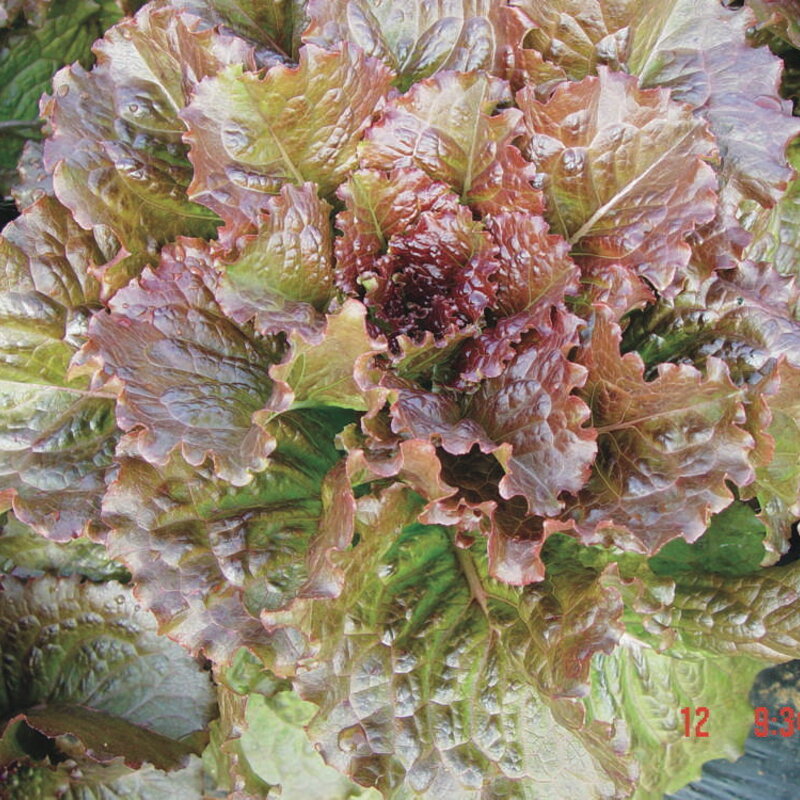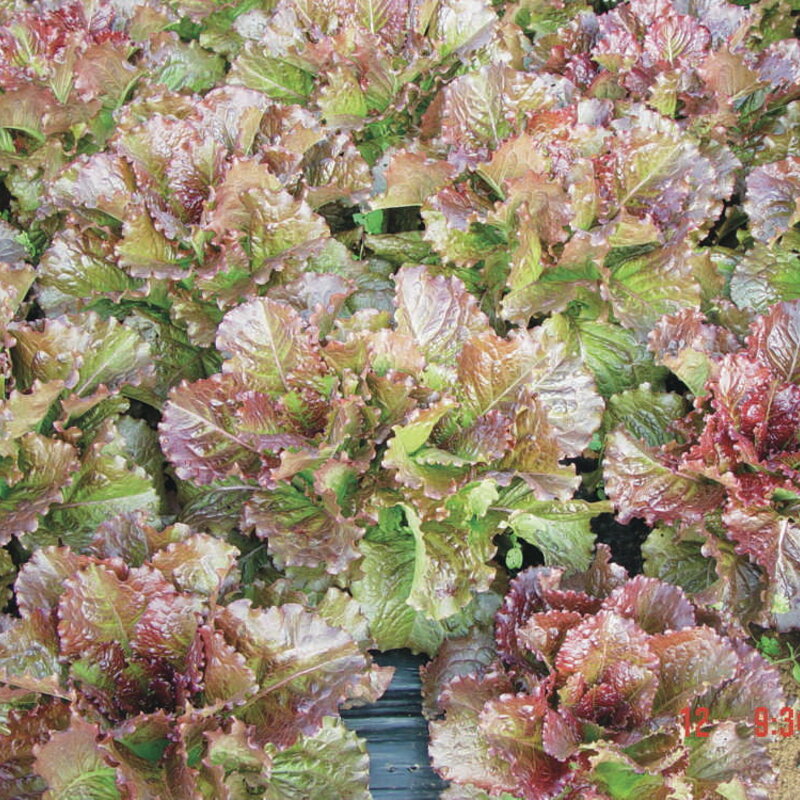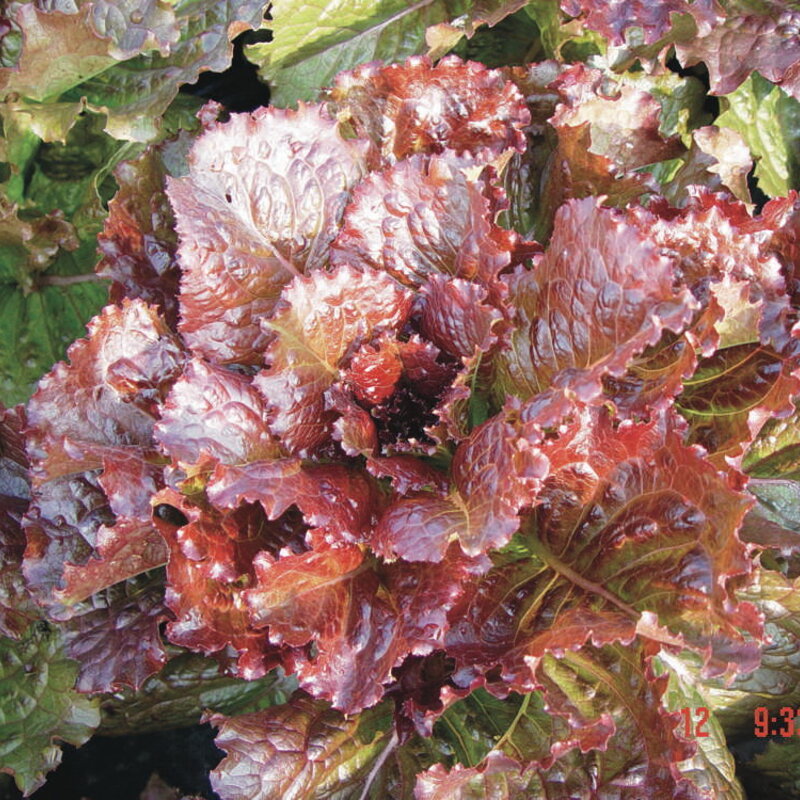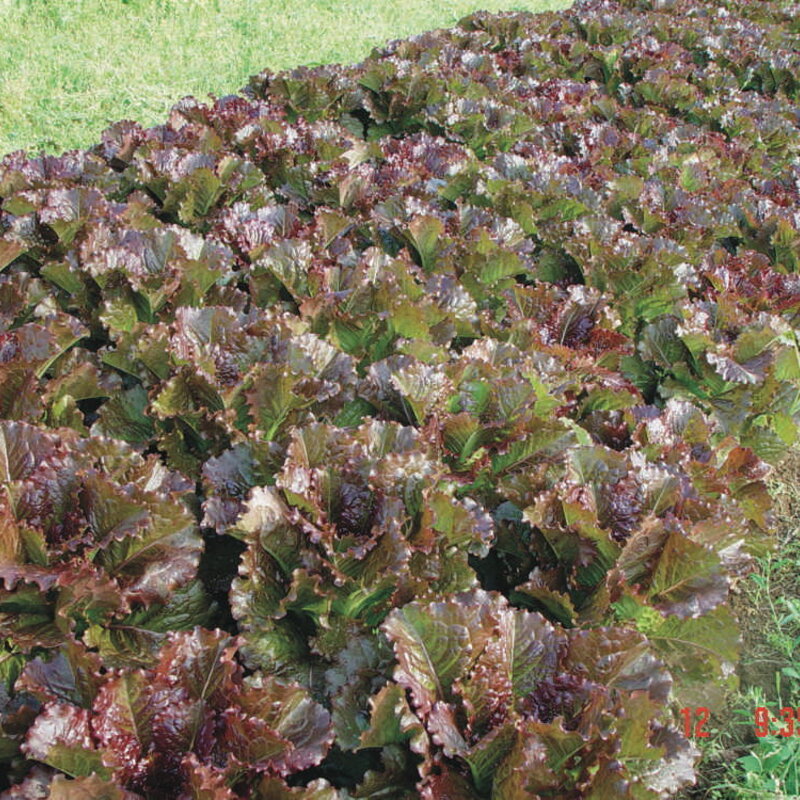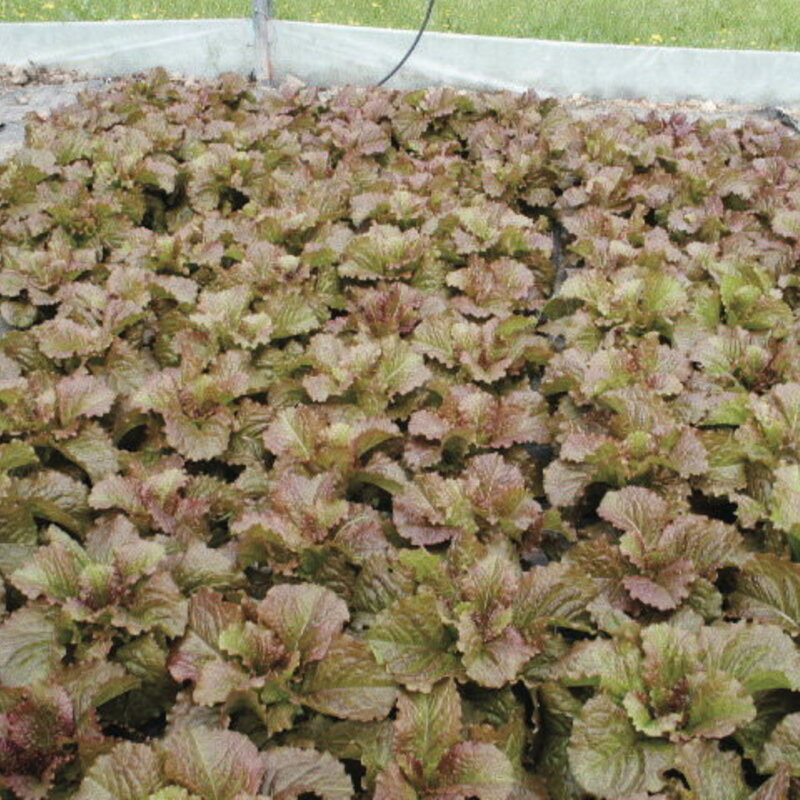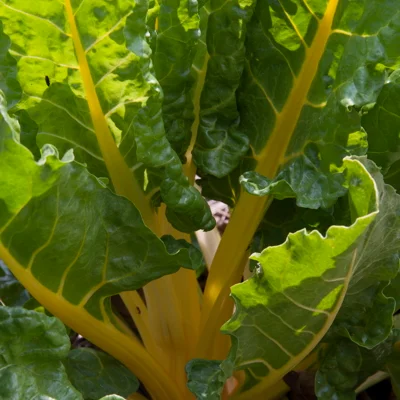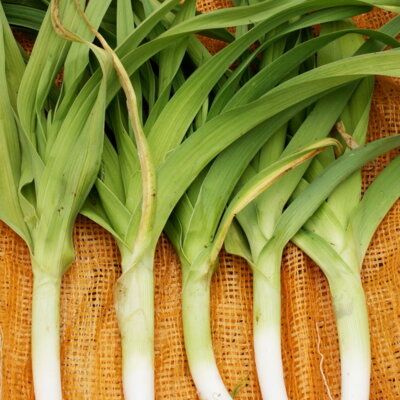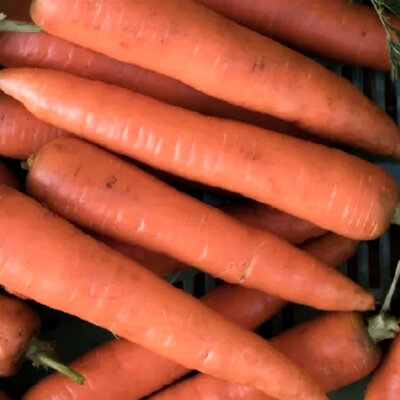Integrata Red - Romaine Lettuce
This variety produces an open head with dark-red, crinkled leaves. It resprouts spontaneously in autumn, producing an abundance of young lettuces towards the end of winter.
Characteristics of Integrata Red romaine lettuce
Integrata Red romaine lettuce, Lactuca sativa, is a new variety developed by Franck Morton in Oregon, USA. It is the result of a cross between the "Wavy Red Cos" variety and a wild lettuce Lactuca serriola integrata. This mid-season variety has an open head with curly leaves, green in color and turning red at maturity. It can be eaten raw in salads, or baked or pan-fried.
Sowing red romaine lettuce
The ideal sowing period is from February to May in pots under cover, and from March to September in the garden. Red romaine lettuce can be harvested from April to January.
Seedlings should be sown one month before planting in the vegetable garden, at a temperature of between 15 and 21°C. Cover the lettuce seeds with a light layer of soil and keep the substrate moist until emergence. Transplant into the garden, 30 cm apart in all directions, once the plants have reached the stage of 4 true leaves.
Seedlings in pots or trays should be sown one month before planting, at a temperature of between 15 and 21°C. Cover the lettuce seeds with a light layer of soil and keep the substrate moist until emergence. Transplant into the garden, 30 cm apart in all directions, once the plants have reached the stage of 4 true leaves. Be careful, however, as transplanting can interfere with the development of the lettuce taproot.
Sow lightly directly in the ground, then thin out to 30 cm in all directions when the plants have 4 true leaves, to encourage harmonious development of the lettuces. Choose humus-rich soil and half-shade exposure. The very small seeds can be mixed with radish seeds to avoid over-dense sowing. Stagger sowing, every 15 days, to enjoy this lettuce for several months.
Red romaine lettuce companion plants
In the vegetable garden, this variety of lettuce grows harmoniously with radishes, cucumbers, carrots, onions, cabbage , beet and strawberries.
These products may also be of interest to you
in bucket, in the ground
Sow in pots or slabs at a temperature of 10-18°C, one month before planting. Cover the seeds with a thin layer of soil, press lightly and water. Once the plants have 4 leaves, prick out. Alternatively, sow lightly in rows 30 cm apart, every 15 days, to stagger harvesting. Thin to 10 cm, then 30 cm. This sowing technique produces more resistant plants, less susceptible to bolting.
February, March, April
April, May, June, July, August, September
April, May, June, July, August, September, October, November
in the ground, in pot
semi-shade, sunny
medium
humus
wet, drained, furniture
Lactuca sativa
mid-season
From 120 to 150 g
1 gram
crunchy
romaine
Red, Green
curly
United States
This variety is the result of crossbreeding work carried out by Franck Morton of Wild Garden Seeds in Oregon, between his variety "Wawy Red Cos" and a wild lettuce "Lactuca serriola integrata".
Franck Morton



